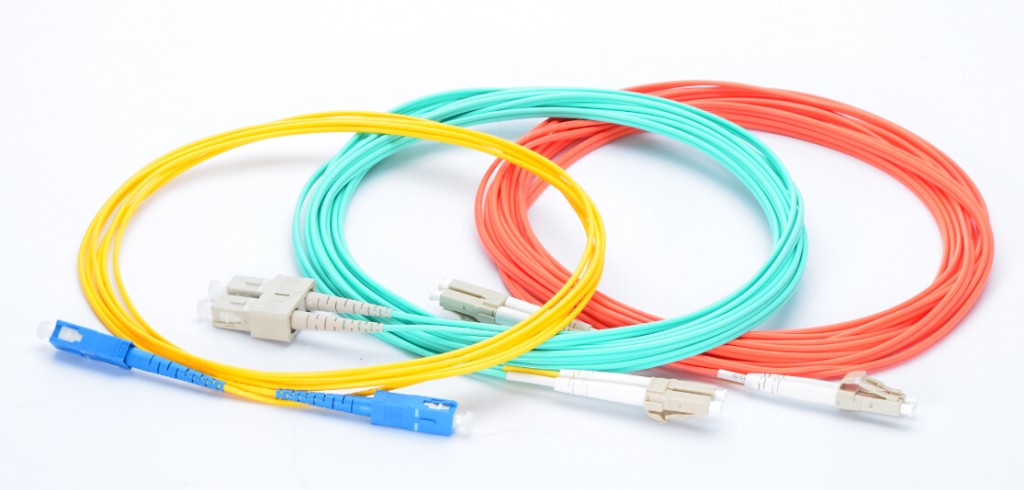Single-mode and Multimode fiber optic patch cords
Fiber optic patch cables, also known as fiber optic cable jumpers or fiber patch cords, are transmission media usually made of glass used to transmit data via light. In recent years, it has become apparent that fiber optic patch cables are steadily replacing copper wire as an appropriate means of communication signal transmission.
There are two main types of fiber optic patch cables: single-mode and multimode fiber patch cable. This post will make a comparison between single-mode and multimode fiber patch cable from four aspects: core size, transmission speed and distance, color code, and application.

Core Size
The core of all fiber cables carries light to transmit data. The main difference between single-mode and multimode fiber patch cables is the size of their respective cores, as shown in the above picture. Single-mode fiber optic cable has a core of 8 to 10 microns. In single-mode cables, light travels toward the center of the core in a single wavelength. Multimode fiber optic cable has a core of either 50 or 62.5 microns. In multimode cables, the larger core gathers more light compared to single-mode cables, and this light reflects off the core and allows more signals to be transmitted.
Transmission Speed and Distance
Both single-mode and multimode fiber patch cable can handle 10G speeds. OM3, one of multimode fiber patch cable can achieve 10Gbps at 300 meters with VCSEL lasers. Single-mode cable has a greater distance potential and can support runs between 2 m and 10 km or 40 km with ER. While multimode cable generally can reach up to 550 m. Typically single-mode cable offers a higher transmission distance up to 50 times than multimode cable. So single-mode cable with lower power loss characteristic than multimode cable is usually used for long-distance transmission with laser diode based fiber optic transmission equipment. While multimode cable is mainly deployed for short distance transmission with LED-based fiber optic equipment.
Color Code
Inside the cable or inside each tube in a loose tube cable, individual fibers will be color coded for identification. Single-mode and multimode fiber patch cable can also be easily distinguished by color. Usually, yellow is used for single-mode cable and orange or aqua is used for multimode cable, as shown in the following picture. But the advent of FC and ST cable made color coding difficult, so colored strain relief boots were often used.

Application
Since single-mode fiber patch cable requires the use of single-mode transmitters which normally are solid-state laser diodes and multimode fiber patch cable allows the use of relatively inexpensive fiber optic transmitters and receivers, the cost of single-mode cable is much higher than multimode cable. Because of these characteristics, single-mode cable is often used in exterior segments and to connect buildings in larger campus environments. Multimode cable, on the other hand, is mainly used in LAN applications including backbone cabling.
Conclusion
Nowadays, fiber optic patch cables, either multimode or single-mode patch cord are widely used between local phone systems as well as many network systems. Other system users include cable television services, university campuses, office buildings, industrial plants, and electric utility companies. Single-mode and multimode fiber patch cable are two different optic cables which have their own separate application fields. And both of them have their advantages and disadvantages. Whether to choose single-mode cable or multimode cable mainly depends on your applications. From the above comparison between single-mode and multimode cable, you can get a basic understanding of them for your selection.
Comments
Post a Comment